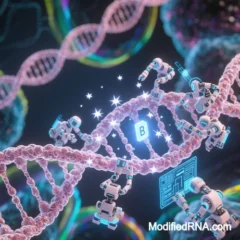CRISPR (Clustered Regularly Interspaced Short Palindromic Repeats) is a revolutionary gene-editing technology derived from a natural bacterial immune system.
Key points:
Uses a guide RNA to direct the Cas9 protein to cut specific DNA sequences.
Allows precise insertion, deletion, or modification of genes.
Applications: curing genetic diseases, improving crops, biomedical research.
Nobel Prize in Chemistry (2020) awarded to Doudna & Charpentier for its discovery.
It’s faster, cheaper, and more accurate than older gene-editing methods.

GeneDeliver.com
Gene Delivery: Cutting-Edge Applications and Future Prospects in Gene Therapy, Vaccine Development, and Basic Research Gene delivery technologies are reshaping paradigms in disease treatment, vaccine development, and basic research by enabling precise delivery of nucleic acids or gene-editing tools …

RNAiTools.com
RNAi Tools: Transformative Potential in Genetic Screening, Drug Development, and Precision Medicine Since its discovery in 1998, RNA interference (RNAi) has evolved from a basic research tool into a cornerstone technology driving multidimensional breakthroughs in life sciences. Its innovative applic…

BioAIGenome.com
BioAI Genome: Ushering in the Programmable Era of Genomics and a Paradigm Shift The "programmable era" of genomics is defined by the deep integration of artificial intelligence (AI) and gene-editing technologies, enabling precise programming and functional redesign of biological systems through modu…

ModifiedRNA.com
Cross-Species Synthetic Biology and Breakthroughs in Modified RNA Technologies I. Core Drivers and Prospects of Cross-Species Synthetic Biology Cross-species synthetic biology aims to engineer diverse biological systems (microbes, plants, animals, or artificial cells) to integrate metabolic pathways…

ModifiedRNA.com
Engineered Modified RNA and Its Biological Significance Core Technical Strategies for Modified RNA 1. Nucleobase Engineering Natural Modification Engineering: Incorporating naturally occurring modified nucleosides (e.g., N1-methyl-pseudouridine, pseudouridine) into mRNA vaccines reduces immunogenici…

mRNAVelocity.com
mRNA Velocity in Developmental Biology and Disease Mechanisms: Applications and Prospects (2025 Update) mRNA Velocity (RNA velocity) is a breakthrough single-cell RNA sequencing (scRNA-seq) technology that infers the directionality and temporal trajectory of cell differentiation by analyzing the dyn…

GenRNA.com
2025 Global Advances and Applications in AI-Driven Drug Development AI-driven drug development has entered a critical phase of "scaling from technical validation to industrial application" in 2025, integrating generative AI, multi-omics analysis, quantum computing, and other technologies to revoluti…

Editomics.com
Edit Omics: The Transformative Potential of Integrating Gene Editing with Multi-Omics Approaches The convergence of gene editing and multi-omics technologies marks a paradigm shift in life sciences, transitioning from "single-dimension observation" to "systematic programming." By integrating genomic…

viralvectorai.com
ViralVectorAI: The Role and Future of AI-Driven Viral Vector Technology in Gene Editing The integration of AI and viral vector technology is revolutionizing gene editing, driving advancements in precision, intelligence, and industrial scalability. By optimizing vector design, predicting editing outc…

GenePlasmid.com
Gene Plasmid: Multifaceted Applications in Drug Production, Vaccine Development, and Gene Function Research Gene plasmids—circular, self-replicating DNA molecules—serve as foundational tools in genetic engineering due to their programmability and versatility. They play critical roles in biopharmaceu…










